If you inspect the Solution (SLN) file, you may find duplicate GUIDs for two or more of the projects. See the example below.
Project("{FAE04EC0-301F-11D3-BF4B-00C04F79EFBC}") = "Ananas", "Ananas\Ananas.csproj", "{F16C0F09-8509-4370-B4FF-C6E1C1C27C31}"
EndProject
Project("{9A19103F-16F7-4668-BE54-9A1E7A4F7556}") = "Bananas", "Bananas\Bananas.csproj", "{9D7771AE-8A04-438E-858A-7DBD42025BF4}"
EndProject
Project("{9A19103F-16F7-4668-BE54-9A1E7A4F7556}") = "Cherries", "Cherries\Cherries.csproj", "{91FB0CB7-5DC1-4B86-B33C-F22BE6A11CF2}"
EndProject
Project("{FAE04EC0-301F-11D3-BF4B-00C04F79EFBC}") = "Dewberries", "Dewberries\Dewberries.csproj", "{424ABA82-B745-4376-8A52-632B9016608E}"
EndProject
As you can see the first and the last project have the same GUID, and the two projects in the middle have the same GUID as well. What you need to do is generate a valid GUID to differentiate the conflicting projects. Such that, you get something like the following.
Project("{2CD1389C-9B3D-41E9-9AC4-FB6402671C81}") = "Ananas", "Ananas\Ananas.csproj", "{F16C0F09-8509-4370-B4FF-C6E1C1C27C31}"
EndProject
Project("{73ED998E-CD14-48E9-8193-A60F496F9CD7}") = "Bananas", "Bananas\Bananas.csproj", "{9D7771AE-8A04-438E-858A-7DBD42025BF4}"
EndProject
Project("{9A19103F-16F7-4668-BE54-9A1E7A4F7556}") = "Cherries", "Cherries\Cherries.csproj", "{91FB0CB7-5DC1-4B86-B33C-F22BE6A11CF2}"
EndProject
Project("{FAE04EC0-301F-11D3-BF4B-00C04F79EFBC}") = "Dewberries", "Dewberries\Dewberries.csproj", "{424ABA82-B745-4376-8A52-632B9016608E}"
EndProject
To generate valid GUIDs, I suggest that you use an online tool for this, such as Online GUID Generator.
